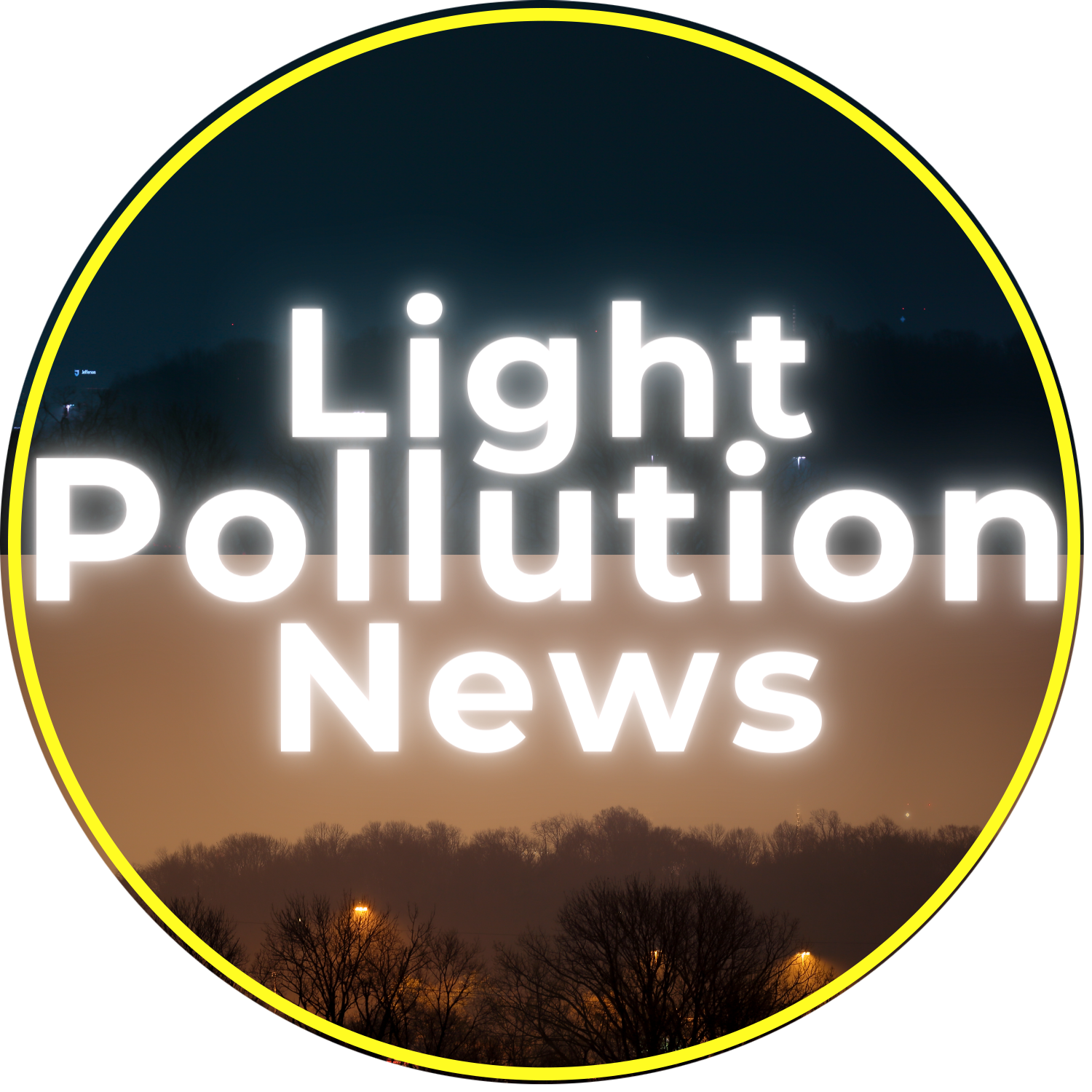
March 2025: Gateway Topics!, Light Pollution News.
Join our mailing list. Follow us at LinkedIn, Instagram, Facebook, & Tiktok.
This Episode:
This episode, headlights, interior lights – what is going on with car lights?!? And should we leave the lights ON for puffins? Plus, how much do you spend on getting a good night’s sleep?
This month, on the show I welcome Los Angeles dark sky advocate, Spencer SooHoo; the founder of the Dark Skies subreddit, Jeff Schmalz; and the law enforcement veteran and educator, Art Hushen!
Like What You See and Hear? Consider Supporting the Show.
A hearty thank you to all of our paid supporters out there. You make this show possible.
For only the cost of one coffee each month you can help us to continue to grow. That’s $3 a month. If you like what we’re doing, if you think this adds value in any way, why not say thank you by becoming a supporter!
Why Support Light Pollution News?
- Receive quarterly invites to join as a live audience member for recordings with special Q&A sessions post recording with guests.
- Receive all of the news for that month via a special Supporter monthly mailer.
- The satisfaction that your support helps further critical discourse on this topic.
Support Light Pollution News!
Host:




Art Hushen
Art Hushen is an Adjunct Professor at the University of South Florida where he teaches a graduate level Crime Prevention Through Environmental Design (CPTED) Course under the Department of Criminology. He is a thirty-year law enforcement officer, having retired from the Tampa Police Department’s Special Operations Division. He was instrumental in the creation of the first CPTED Unit in the country and Tampa’s first of many CPTED Ordinances under planning and zoning.
As the Founder of NICP, Inc., Art continues a similar process of implementing CPTED concepts and strategies at an international level through training programs and consulting with various government, private sector, and nonprofit groups. Through the implementation of the CPTED Professional Designation (CPD) Program the NICP has set a standard for professional recognition for those earning the CPD. The NICP’s training program is recognized and certified by a variety of local and federal law enforcement agencies and corporations and codified by cities throughout the US.
Art is the lead CPTED Instructor for the Florida Attorney General’s Office where he assisted in the creation of the Advanced CPTED program, the State standards for the FCP CPTED Designation, Critical Infrastructure and CPTED, Making Schools Safe by Design program, CPTED for Health Care Facilities, and Lighting for Safety. Art holds a Bachelor of Arts degree in Criminology from the University of South Florida.
Art is the Executive Director of the US-CPTED Association, Past Chair of the Florida Design Out Crime Association (FLDOCA), where he received the FLDOCA “Lifetime Achievement Award,” member DarkSky Internationals ROLAN Committee, member of ASIS International, past member of the ASIS Physical Security Council, and past member of the IESNA Security Lighting Committee. In 2022 Art was inducted into the University of South Florida Department of Criminology Wall of Fame as a Distinguished Alumnus.
Jeff Schmalz
Jeff Schmalz is a dark sky advocate who created the subreddit r/darksky, which has grown to over 32,000 members.
Spencer SooHoo
Spencer holds a PhD in Biomedical Engineering from the University of Southern California and has been working at Cedars-Sinai Medical Center for over 40 years. During his tenure, he has held several positions, including Chief Information Security Officer and Director, Research Informatics and Scientific Computing, before switching careers to become a research scientist at Cedars-Sinai.
As a child growing up in Northern Arizona, Spencer did not fully appreciate what the impact of light pollution could be, since he took it for granted that in the Summer, one could just step outside and see the Milky Way. In 1986, he purchased his first telescope to see Comet Halley and his wife gifted him a membership in the Los Angeles Astronomical Society (LAAS), where he is currently the Membership Secretary. He enjoys sharing views of the night skies at public star parties and on most new moon weekends and tries to hone his astrophotography skills at the LAAS dark sky site about 90 miles from the Los Angeles area. Over the past 10 years, he has noticed that the night sky at the dark sky site is getting brighter and brighter. The Los Angeles County Board of Supervisors’ approval of a proposed development of 19,000 homes near the LAAS dark sky site prompted him and another LAAS member to form and co-chair the LAAS Light Pollution Committee. Their goals are to educate the public and elected officials about the impact of light pollution and to persuade governmental officials to either enact night sky friendly ordinances or to enforce and enhance existing night sky friendly ordinances.
Full Article List:
- Streetlight upgrade to help protect dark skies, Richard Edwards, BBC.
- The War Against Headlight Brightness, Nate Rogers, The Ringer.
- Cars Need to Bring Back Interior Dimmer Switches, Chris Perkins, Motor1.
- Three in four motorists ‘blinded’ by dazzling headlights, Sky News.
- If You Hate Your Car’s Digital Dashboard, Consider a Game Boy, Florence Ion, Gizmodo.com.
- Celebrating Successes in Reducing Bird Collisions, US Fish and Wildlife.
- Navigating the night: effects of artificial light on the behaviour of Atlantic puffin fledglings, Animal Behaviour.
- Atlantic puffins are perilously attracted to artificial light, new study shows, Spoorthy Raman, Mongabay.
- Stealthy hunters: Barn owls use moonlight for camouflage, Sanjana Gajbhiye, Earth.com.
- Nocturnal camouflage through background matching against moonlight, PNAS.
- Marine light pollution science initiative endorsed by United Nations, Alan Williams, University of Plymouth.
- Renewed Debate: Streetlight Color and Health Implications, Inside Lighting.
- Impact of Solid State Roadway Lighting on Melatonin in Humans, Clocks & Sleep.
- US Adults Are Willing to Spend Nearly $1000 a Year to Achieve a Good Night’s Sleep, CNET Survey Finds, Nasha Addarich Martinez, CNET.
- National Park visitors perceive benefits for themselves and wildlife under blended red-white outdoor lighting, Scientific Reports.
- Visitors to Grand Teton National Park Prefer Red LED Lights at Night, Park Science.
Light Pollution News: March Highlights
North Yorkshire’s LED Upgrade and Dark Sky Protection
In a significant move for sustainable urban development, North Yorkshire Council, adjacent to the North York Moors National Park, is replacing 4,500 street lights with energy-efficient “warm white” LED fixtures. These new LED street lights are designed to be switched off when not needed, reducing energy consumption and helping protect local ecology and the night sky from excessive light pollution. This initiative supports both environmental conservation and the preservation of natural darkness, a growing concern among ecologists and astronomers.
The Rising Challenge of Light Pollution and Headlight Glare
Light pollution remains a major environmental issue in 2025, with sources ranging from urban street lighting to vehicle headlights. Notably, the UK is taking steps to address the problem of “headlight dazzling”—the temporary blinding of drivers caused by excessively bright LED headlights. Since the introduction of LED headlights in 2015, average headlight brightness has surged by 120%, correlating with increases in reckless driving and road fatalities according to recent studies. This trend highlights the urgent need for regulations on automotive lighting to enhance road safety and reduce nuisance lighting.
Community Response: Combating Excessive Headlight Brightness
Online communities, such as the popular “F— Your Headlights” subreddit, have become vocal platforms for drivers frustrated by blinding headlights. Members share solutions like rearview mirror brightness reducers and advocate for better lighting standards. The issue has even drawn commentary from automotive experts, who criticize automakers for integrating all lighting controls into infotainment screens, complicating efforts to manage in-car brightness and contributing to temporary driver blindness.
Innovations in Bird-Safe Lighting and Wildlife Conservation
Artificial light at night poses significant threats to wildlife, particularly birds. The US Fish and Wildlife Service recently celebrated progress in reducing bird collisions at notorious hotspots like Chicago’s McCormick Place Lakeside Center, where the installation of bird-safe window dots and a “curtains closed by default” policy has proven effective. Additionally, Viking Cruises has introduced a “Bird Mode” on its ships, dimming deck lighting and closing curtains to protect birds during migration through sensitive habitats. The Petrified Forest National Park, a certified Dark Sky Park, is also upgrading to etched bird-safe glass to further mitigate avian risks.
Puffins and Artificial Light: New Research Insights
Recent studies published in Animal Behaviour reveal that Atlantic Puffins are attracted to artificial light of any color, leading to increased fledgling strandings. Conservationists in Iceland have intervened by guiding disoriented chicks away from hazardous areas illuminated by streetlights. The research underscores the need for shielded street lighting installations to minimize ecological disruption and protect vulnerable bird populations.
Nature’s Adaptations: Barn Owls and Moonlit Camouflage
Barn owls exemplify nature’s ability to adapt to nocturnal environments. Their white plumage, contrary to expectations, helps them blend into the moonlit sky, reducing contrast and aiding in stealth while hunting. This natural camouflage highlights the complex interplay between wildlife and ambient lighting conditions.
Global Initiatives: Addressing Artificial Light in Aquatic Ecosystems
The United Nations has endorsed the Global Ocean Artificial Light at Night (GOALANN) initiative, spearheaded by the University of Plymouth. This international project aims to advance research on the effects of artificial light on marine life, aligning with the UN Decade of Ocean Science for Sustainable Development (ending in 2030). The initiative brings together scientists worldwide to explore and mitigate the impacts of light pollution on aquatic ecosystems.
Health Impacts of Artificial Lighting: Ongoing Debates and Research
The health effects of artificial light, particularly blue-rich street lighting, remain a contentious topic among lighting engineers and medical professionals. While some studies suggest that roadway lighting does not significantly affect salivary melatonin levels, other research links nighttime light exposure to increased risks of diabetes and Alzheimer’s disease. Public surveys indicate a strong preference for warmer lighting temperatures, with cultural and geographic factors influencing these preferences. Notably, recent research in Grand Teton National Park found that red lighting is perceived as less intrusive and more wildlife-friendly compared to white lighting, without compromising safety or navigational comfort.
Sleep Health and Light Pollution: Consumer Trends
Sleep quality has become a major concern, with adults in the US willing to spend up to $900 annually on sleep-related products and solutions. Despite widespread use of supplements like melatonin, surveys rarely address the impact of exterior and interior light pollution—from streetlights to electronic devices—on sleep health. Addressing these overlooked sources of light pollution is essential for improving overall well-being
Light Pollution News: March Read Along
Here’s a good warm up article. Last episode, we had a great discussion on some street lighting news items with Nick Mesler. The North Yorkshire Council, over by the North York Moors National Park, will be replacing 4500 street lights with what they call a ‘warm white’ LED fixture. The fixtures are slated to be turned off when not needed in order to protect both the environment (think ecology) and with the added benefit of protecting the view of the night sky.
I want to start us off this month with the ongoing saga that I’ve punted on for some time now. Now, I did so because much of the news wasn’t ripe enough, but here we are. And you can thank some excellent reporting by Nate Rogers at the Ringer. I highly recommend that you read this article, which, of course, can be found in our show links.
In 2025, there’s no shortage of light pollution sources. And also, in 2025, there’s no shortage of passing the buck. I’d label this one under nuisance lighting, which has very real implications.
Toward the end of 2024, news articles in the UK began to show signs that the United Kingdom was going to be the first English speaking country to try and tackle the topic of headlight dazzling. For you at home, the phrase dazzled doesn’t refer to some Hollywood/Bollywood superstar. Rather, it refers to the temporary blinding of a driver by headlight glare that could precede any number of terrifying endings.
Some things to note from Rogers’ article. Since 2015 and the advent of LED headlights, the average headlight brightness has risen an astonishing 120%! And the data that Rogers presents is a bit more curious, including one connection drawn from an NYTimes article that correlates the rise of LEDs to increases in reckless driving and road fatalities.
The article also discusses things from the point of view of a sub-redditer named Paul Gatto. Gatto started up a Reddit called ‘F— Your Headlights’, edited because above all we’re a family show, of course!
The subreddit, as Rogers puts it, reads at times as if ‘Grandpa Simpson is writing a letter to the president to say that there are too many states. And following up with a very RFK [By the Way] ‘I’m not a crackpot!’
Gatto and his Reddit represent a very active and begrudging community who abhor both the new blinding low beams as much as they disdain the high beams.
Gatto even built a rearview mirror brightness reducer to assist you when someone pulls up behind you with absurdly bright LED bars from hell.
I also will mention that in an act of desperation, Rogers reached out to NPR’s Click and Clack!; to the remaining surviving brother Ray Magliozzi who has this humorous quote regarding aftermarket LED light bars – Per Magliozzi speaking from Boston, MA – ‘people attach these [LED bars that is] to their cars as if they’re going to encounter a moose or something!’
We bought a new Subaru last year and by and large, we’ve figured out how to dim most things down to a reasonable level for driving at night. However, still for whatever reason, when you turn off the ignition, the infotainment screen returns to full brightness, imparting temporary blindness on you just as you get out of the car!
Well, a Motor1 article took a jab at automakers who bundle their dash, interior lighting, and screen brightness controls all inside the infotainment screen. Author, Chris Perkins, bemoans the eyesore of the infotainment screen (I couldn’t agree more), the impact of accessory LED strips in car interiors (for which the author casually implicates car manufacturer Mercedes), and the lack of simple, tangible control switches outside of the infotainment screen (something I bemoan, as well).
Ok, enough yelling at the sky!
Before we get out of this space, should you also pine for the days when cars had physical control buttons, here’s an impractical but interesting way to solve the problem of your car’s lack of buttons.
A YouTuber named John Sutley found a way to control his car’s digital readouts via an old school Gameboy…yes that Gameboy – that interfaced directly with the car’s onboard computer.
Apparently, it took Sutley a good bit of time to figure this one out. He even had to build custom circuit boards…but at the end of the day, he did prove that it could be done!
Some interesting stuff over in ecology this month. The biggest story is from the US Fish and Wildlife, who took a victory lap for the positive action they inspired to reduce bird collisions in some critical areas.
These include the infamous McCormick Place Lakeside Center in Chicago, which you’ll recall has a very lengthy history of birdslaughter? McCormick Place installed “nearly 2 football fields” worth of bird dots on their windows. The Center also implemented a “curtains closed by default” policy to cut down on the impact of artificial light at night on birds.
Speaking of which, did you hear about this? Viking Cruises installed a “Bird Mode” on its Octantis and Polaris ships. This mode would reduce the ship’s light output by dimming deck lighting, automatically closing curtains, and informing passengers of how light adversely affects birds. This Bird Mode would be utilized when the ships pass through sensitive bird habitats. Often, birds will track with bright vessels.
And, not to forget, the Petrified National Forest, which has been a Dark Sky Park for seven years, is planning on replacing its current windows with etched bird safe glass.
This leads us into a neat little story on Puffins, everyone’s favorite Atlantic bird.
Puffins are curious birds. Each year, Puffins breed all across the North Atlantic. The lifelong monogamous birds return to the same burrow and lay only one egg. After a few months, the chick leaves home to venture onto the sea for the next four years of their lives before they breed.
Well, according to a study out of Animal Behaviour, light – artificial light of any color- attracts Puffins. You may recall an earlier article we had on the show that involved a number of conservationists in Iceland literally tossing Puffin chicks into the sea – this helped avert those fledglings from going astray, confused by the nearby streetlights. We’ll casually ignore the fact that, yet again, it is incumbent upon people to fix a completely manmade (and easily correctable) problem with proper, inexpensive shielding.
Well, the study out of Animal Behaviour built on prior research and found that, yes, increased artificial light at night may increase fledgling strandings, but it may also be a tool to lure stranded fledglings away from dangerous situations or user conflicts. The study also found that light color does not matter for Puffins. Rather, it’s simply the allure of light itself. Yet another reason why street lighting should have a shield first installation practice.
Now, this next one, from Earth.com, isn’t necessarily about light pollution but rather showcases the impressive capacities of mother nature to blend in under the cover of moonlight.
Barn owls may be perfectly engineered predators. As nocturnal animals, the structure of their face helps funnel noises to their ears. They also have white faces and a white underbelly, something that you’d think would be problematic for a nocturnal predator.
However, barn owls actually leverage bright moonlight to their advantage. The feathers of the bird reflect light that effectively reduces the perceived contrast between its body and the nighttime sky. The barn owl, perched high in a tree, blends seamlessly into the nighttime sky.
Nature never ceases to impress.
Finally, let’s finish out our ecology news for March with some news from the UK. We’ve had a good number of articles on artificial light’s impact on aquatic ecosystems. If you aren’t aware of those, you can check out prior episodes and/or simply head over to the Ecology tab on our website, sitting under the Research menu.
According to the University of Plymouth, the United Nations has endorsed the Global Ocean Artificial Light at Night (GOALANN) initiative, bringing together scientists of many stripes and backgrounds to continue to grow research on how artificial light at night impacts marine life. It will be part of the UN’s Ocean Decade Actions. For you at home who may not be aware, we are sitting smack dab in the middle of the UN’s Decade of Ocean Science for Sustainable Development. This decade’s focus will end in 2030.
In health news, there’s only one story this month, and it involves our January guest, Dr. Mario Motta. Evidently, color temperature is a serious point of contention for lighting engineers, specifically the Illuminating Engineering Society (IES), who appear to be distancing themselves from the 2016 American Medical Association’s claim that street lights containing blue light cause adverse health effects. The article from Inside Lighting refers specifically to a Restoring Darkness podcast episode, whereby Dr. Motta insinuated that some in the lighting community harassed him.
For you at home, you’ll recall we had a rigorous discussion on artificial light’s impact on human health back in our January episodes with Dr. Motta. If you missed those, you’ll definitely want to go back and take a listen.
Perhaps not surprisingly, this piece out of Inside Lighting only brings to attention a 2022 article we discussed on this show that indicated roadway lighting may not impact salivary melatonin levels. Existing in this same space appears to be a drumbeat of studies left out from the article, which correlate artificial light at night to health concerns, including diabetes and Alzheimer’s disease. All of which, of course, have also been discussed on this show, as well – specifically, I’ll point you to our Holiday Potluck episode where guest John Barentine brings up a study he found to be very important from the journal – PNAS.
In the meantime, we’ve had a small handful of surveys and articles come through discussing color temperature preferences, of which it appears that most people are in favor of warmer lighting temperatures. As an addendum to that point, last month, Isa Mohammed relayed a hypothesis for cultural acceptance favoring certain colors – whereby here in the West, we may naturally prefer warmer colors, while along the equator, the exact opposite appears to be preferred – that being a color temperature of 6500K! Not sure why that would be, but without any real observational data, we conjectured that maybe it was driven by latitude and the angle of the sun.
Well, it appears that a study looking at visitor perceptions of the Grand Teton National Park in Wyoming found that red lighting is a pretty unoffensive color, despite not being perceived as bright. Researchers surveyed 573 people with an average age of 44 years old and that were 60% male. Survey respondents weighed color heavier than brightness.
Overall, the red lamp thoroughly outperformed the white in its perceived impact on wildlife and visual comfort. The red outpaced the white lamp on navigational comfort. And it lined up on par, still slightly better, edging out the white when it came to safety.
And to wrap up today’s show. Just how much are you willing to spend on a good, honest to god, night’s sleep? Evidently, sleep is a booming industry aimed at younger adults. News agency CNET found that adults would be willing to spend upwards of $78 a month – that’s $900 a year to improve their quality of sleep! And it doesn’t stop there – over half of US adults employ some type of coping mechanism to deal with sleep deprivation. 21% of those take supplements like melatonin!
Now the focus of the survey was Q4 of 2024 and includes costly purchases like beds and mattresses that make up the bulk of the $900 annually number. However, apparently, of their sample size, only 23% of people surveyed don’t have sleep related challenges. Supplements appear to lead the way in ‘fixes.’ I will note that at no point does the survey address the elephant in the room, and that is both exterior light pollution from light trespass sources outside of the residence and interior light pollution from things like indicator lights and phones.

